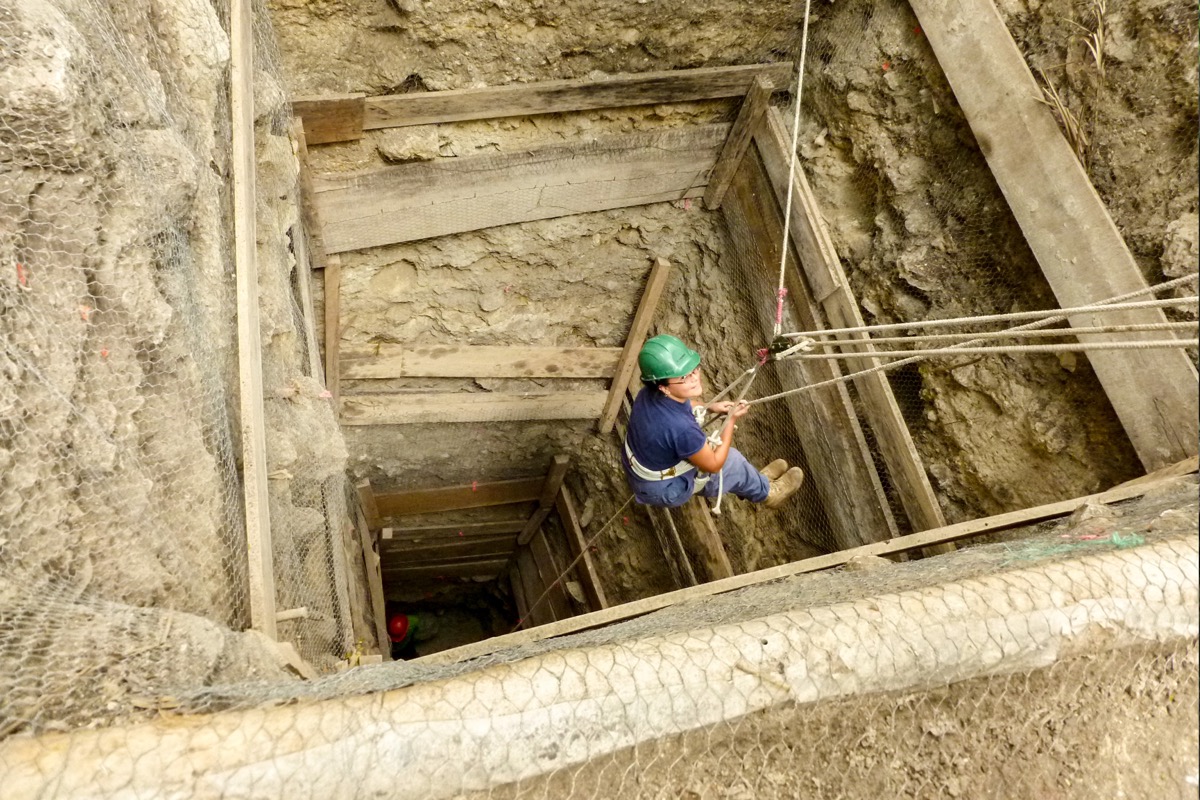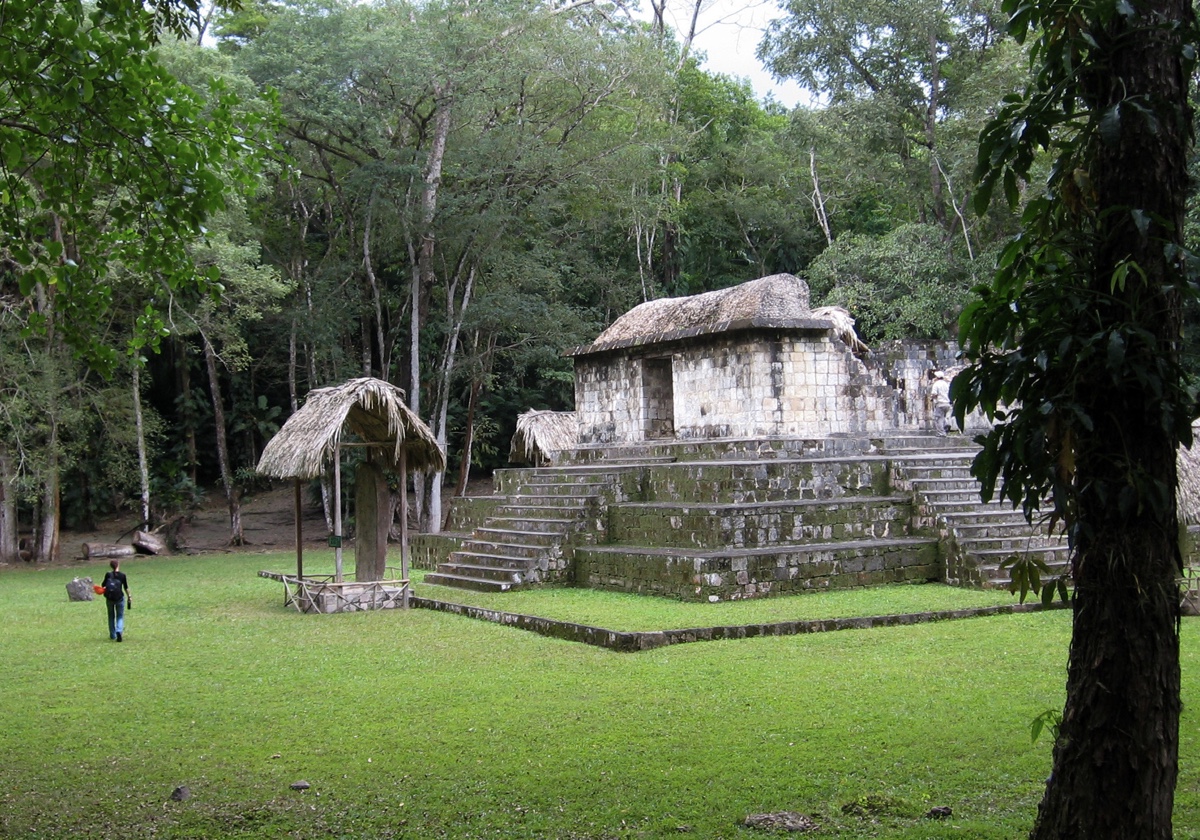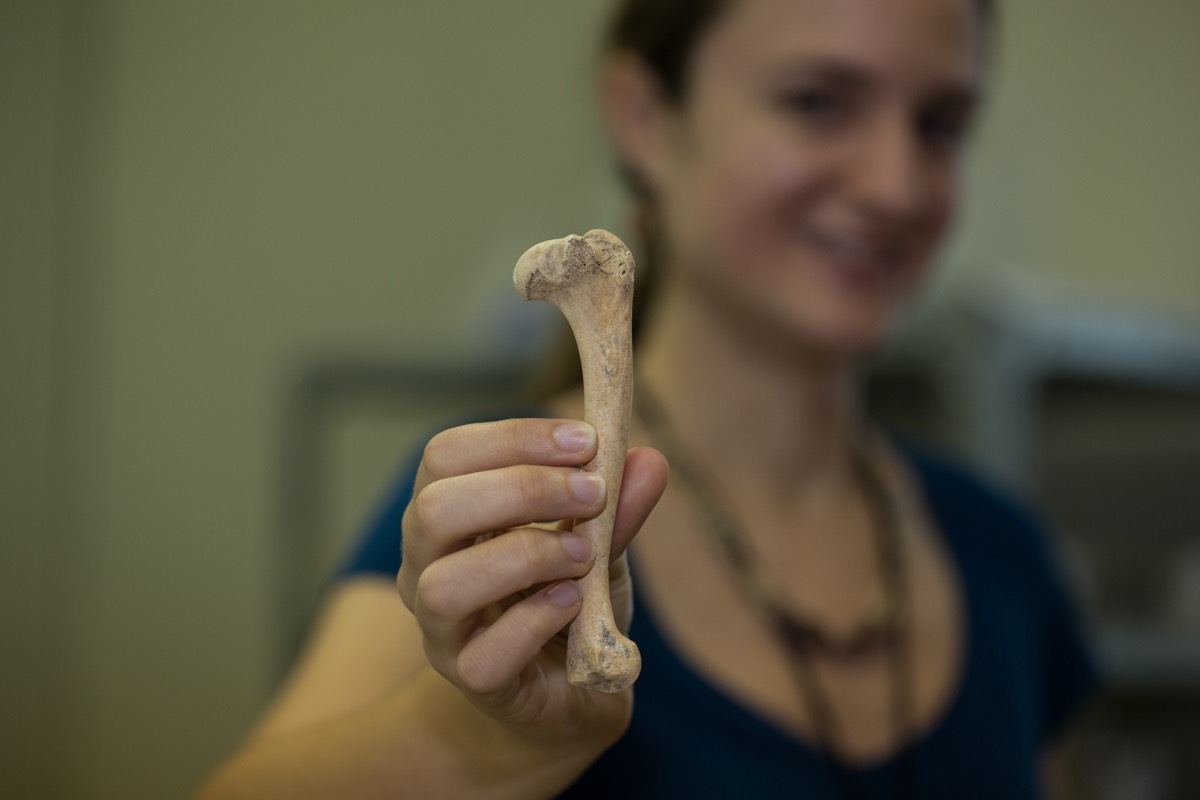Big Cats and 'Ritual' Dogs Lived in Maya Captivity

Dogs and cats — big cats — played a larger role in early Maya society than realized before, new research finds.
The ancient Maya were keeping big cats in captivity and transporting dogs long distances as early as 400 B.C., according to a new analysis of animal bones from the central Guatemala site of Ceibal. At least one large cat, probably a jaguar, was kept in captivity from its youth at the site during that era. And two dogs, both of which were born 100 miles (160 kilometers) away, were found in two separate pyramids in the central part of Ceibal. The dogs may have belonged to an important person or even been used in religious rituals, said study leader Ashley Sharpe, an archaeologist with the Smithsonian Tropical Research Institute.
These animals weren't necessarily all domesticated, Sharpe said, meaning humans weren't always controlling the beasts' breeding or selecting desirable traits. But the animals were interacting with humans in clearly complex ways, she said. [In Photos: Hidden Maya Civilization]
"We're seeing a lot more management of wild animals than we originally thought," Sharpe told Live Science.
Animal tales
Not much is known about the advent of animal domestication in Central America, Sharpe said. Unlike in ancient Rome or Mesopotamia, there aren't many signs of cattle or goats in the archaeological record. Most of what is known about how the Maya people used animals comes from Spanish accounts, which don't pick up until the early 1500s.
Ceibal is a site that holds some of the oldest large Maya monuments, Sharpe said, and it was continuously occupied for some 2,000 years, up until about A.D. 1000.
"We have this huge time span to compare the first people living at the site, up to the height of the Maya civilization," she said.
Get the world’s most fascinating discoveries delivered straight to your inbox.
Among the garbage dumps and construction rubble of Ceibal, archaeologists have discovered animal bones from species ranging from domesticated dogs to wild turkeys to large pigs called peccaries. Sharpe tested dozens of these bones from across the site and across multiple time periods. To do so, she used isotope analysis, which examines differences in elements found in the bones to reveal what an animal ate or where it lived.
In the new study, published today (March 19) in the journal Proceedings of the National Academy of Sciences, Sharpe and her colleagues focused on four different isotopes. The first were carbon and nitrogen, which can reveal what kinds of plants an animal ate during its life, as well as how much protein it consumed. Different types of plants contain different isotopes of carbon, and the isotopic makeup of maize, a big part of the Maya diet, stands out from the forest vegetation of Central America. [Images: Maya Maize Secrets Revealed in Tikal Soil]
The researchers also tested ratios of strontium and oxygen in tooth enamel. Tooth enamel forms only once, early in an organism's life, Sharpe said, and the minerals the enamel contains originate from the local soil, rock and water. Strontium isotopes in particular can reveal the local geology in the area where the animal was born, while oxygen can help pinpoint the water sources the creature first drank from.
The beginnings of domestication
"The coolest thing was not what I had expected to find at all," Sharpe said. In other parts of the world, people domesticated and traded large animals, so she thought the ancient Maya might have been moving around animals like deer and peccary, Sharpe said.
"Instead, what I found was that all the big animals were local, but some of the dogs were not local," she said.
Indeed, two of the approximately two dozen dogs she tested came from the southern volcanic highlands of Guatemala, a 100-mile trek from Ceibal. These dogs, which lived around 400 B.C., were fairly old when they died and were found in the pyramids of central Ceibal. The local dogs found elsewhere in town, by contrast, were mostly about a year old at death and probably were slaughtered for food, Sharpe said. The two pyramid dogs provide the oldest direct evidence of dogs being transported long distances in Central America, she said. There were no cut marks on their bones, so Sharpe and her colleagues can't be sure whether they were sacrificed or died in some other way.
In another odd finding, a single jaguar or puma from around 400 B.C. in central Ceibal had a maize-rich diet from a young age, suggesting the cat was eating either maize or animals that ate maize. Some Maya art from the era shows kings holding jaguars or jaguar pups, Sharpe said, but this is the earliest physical evidence of a big cat being held in captivity by the ancient Maya.
The researchers found other, less dramatic evidence of animals being managed by the Maya, as well. Two turkeys from a northern species that eventually gave rise to the turkeys domesticated today were maize-eaters, indicating that the Maya were already starting the domestication process during the Classical period, between A.D. 175 and 950, Sharpe said. All of the turkey bones that came from the more southern species, the ocellated turkey, indicated that those turkeys ate wild vegetation. That species has never been domesticated, she said.
Sharpe said she hopes to continue the research by studying more animal bones from Ceibal as well as from sites in the highlands of Guatemala. Comparing bones from these different regions will allow the researchers to trace the trade patterns of the Maya that existed long before any written records of trade, Sharpe said.
Originally published on Live Science.

Stephanie Pappas is a contributing writer for Live Science, covering topics ranging from geoscience to archaeology to the human brain and behavior. She was previously a senior writer for Live Science but is now a freelancer based in Denver, Colorado, and regularly contributes to Scientific American and The Monitor, the monthly magazine of the American Psychological Association. Stephanie received a bachelor's degree in psychology from the University of South Carolina and a graduate certificate in science communication from the University of California, Santa Cruz.




